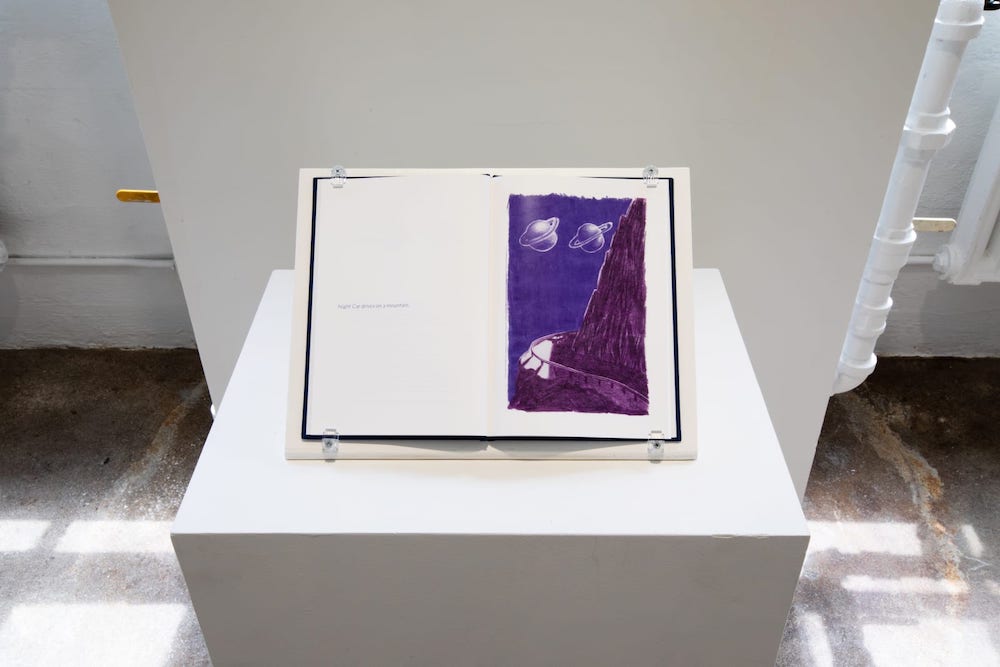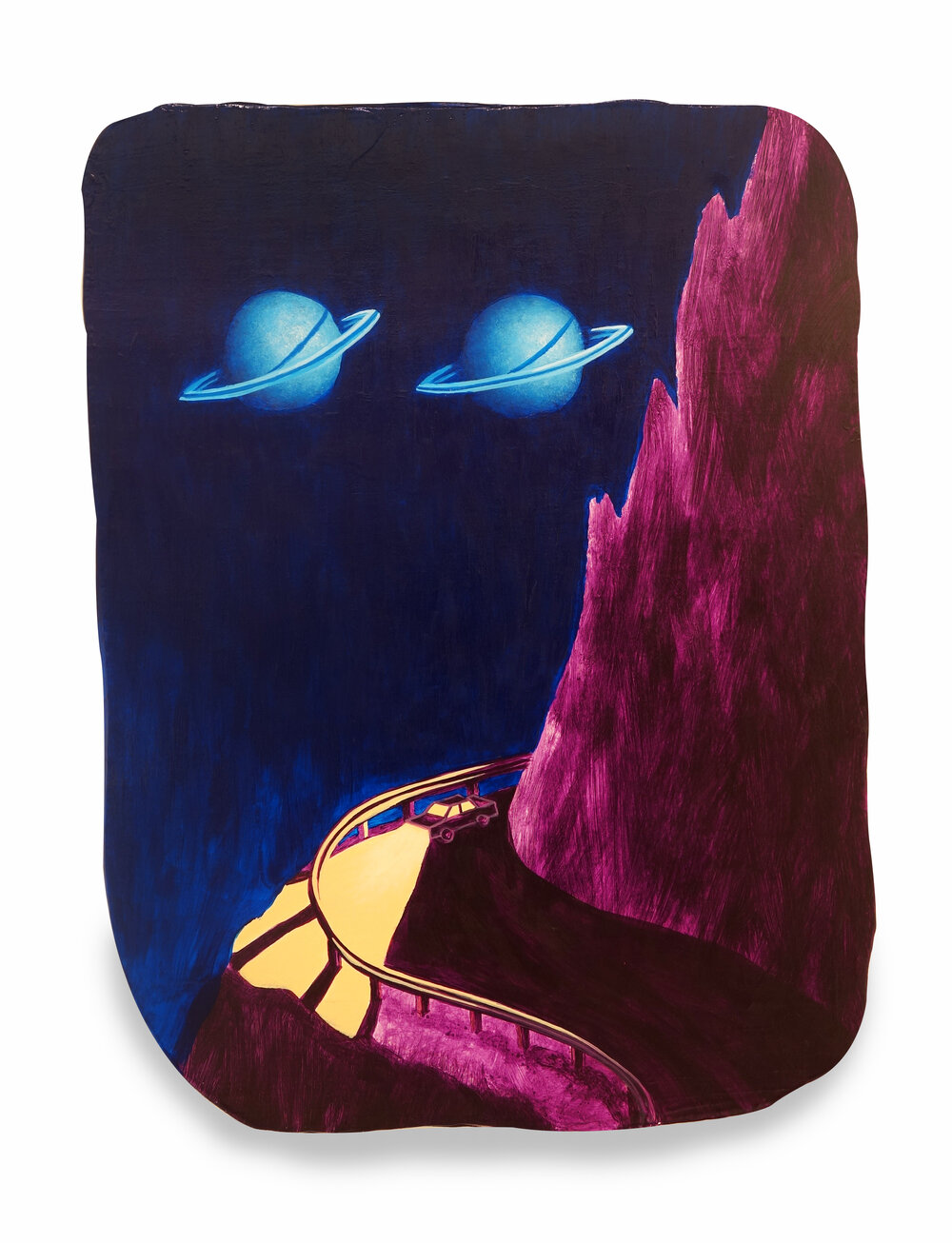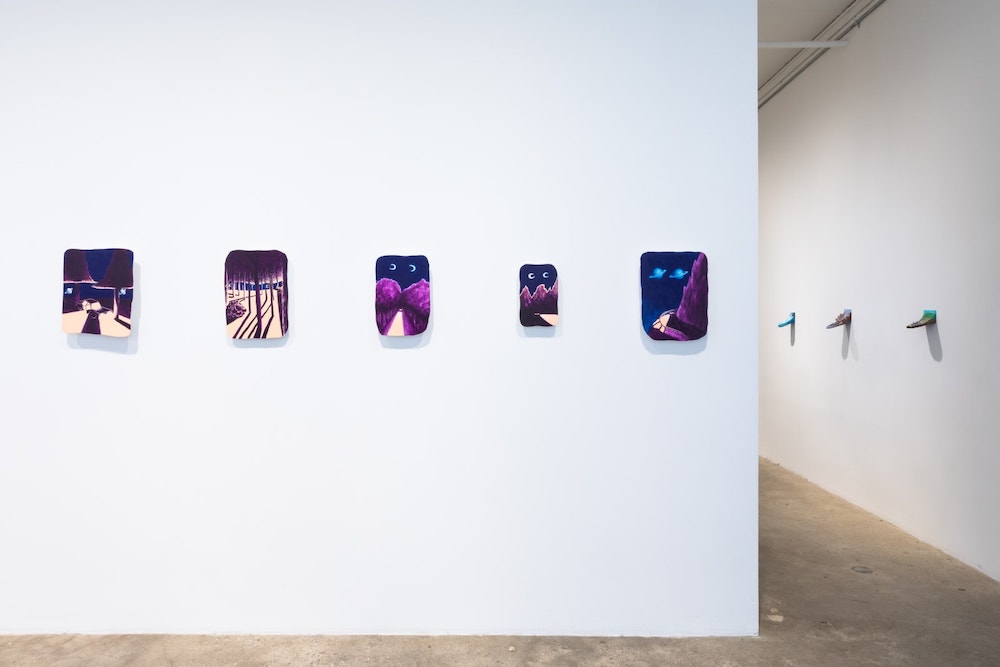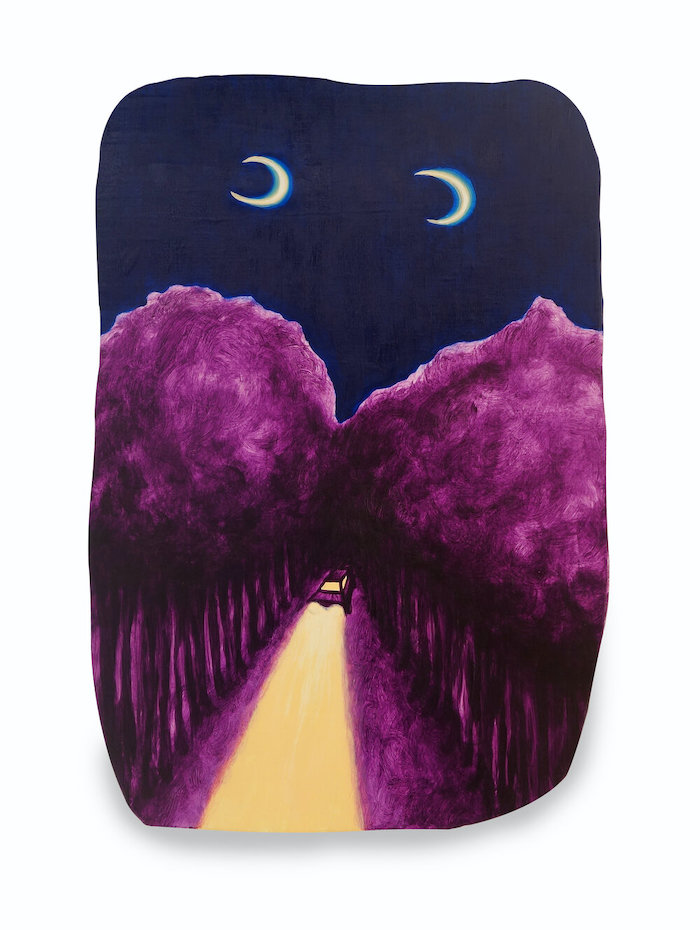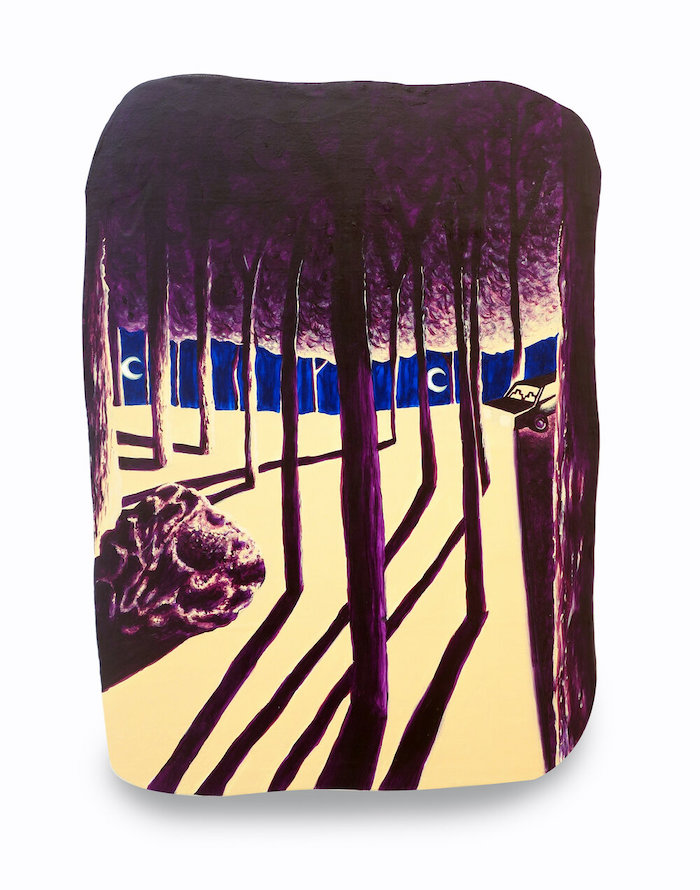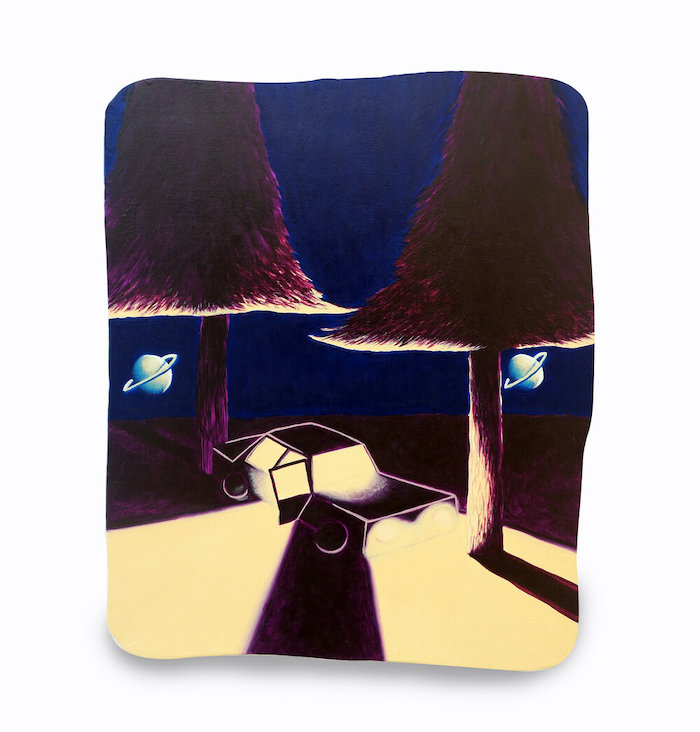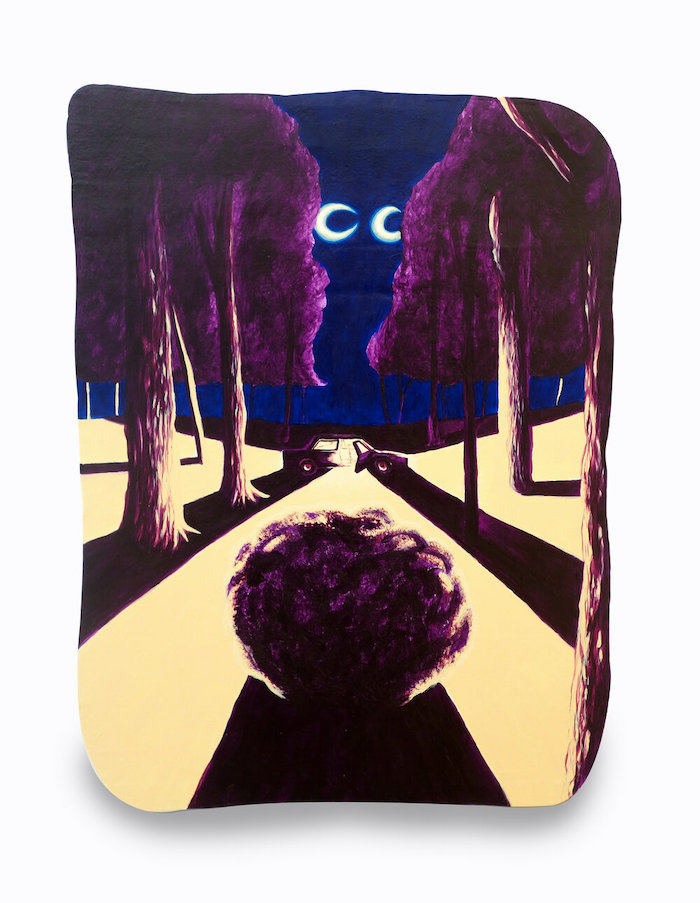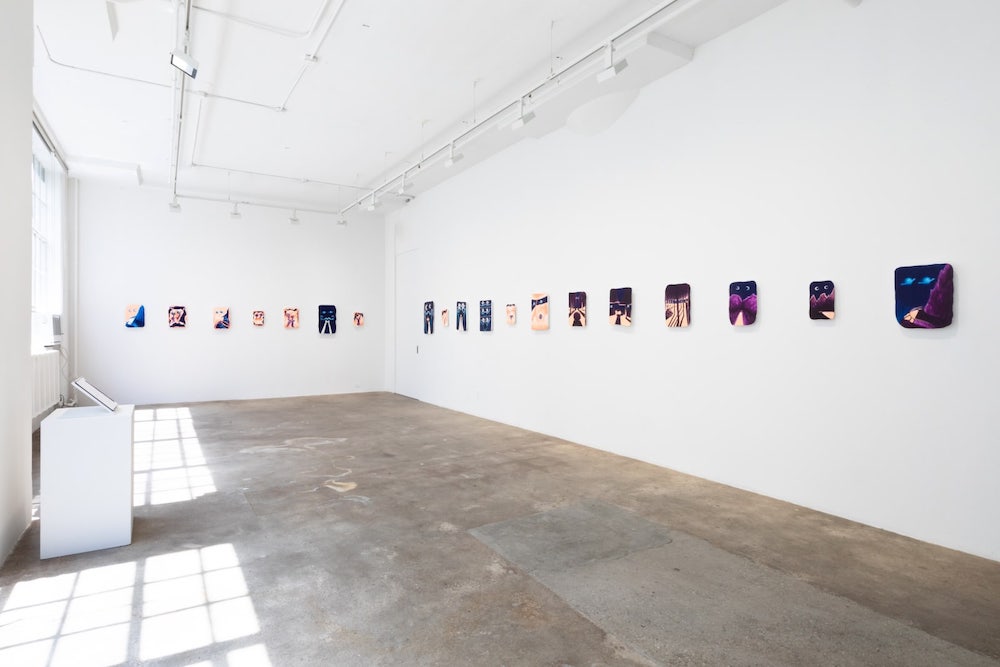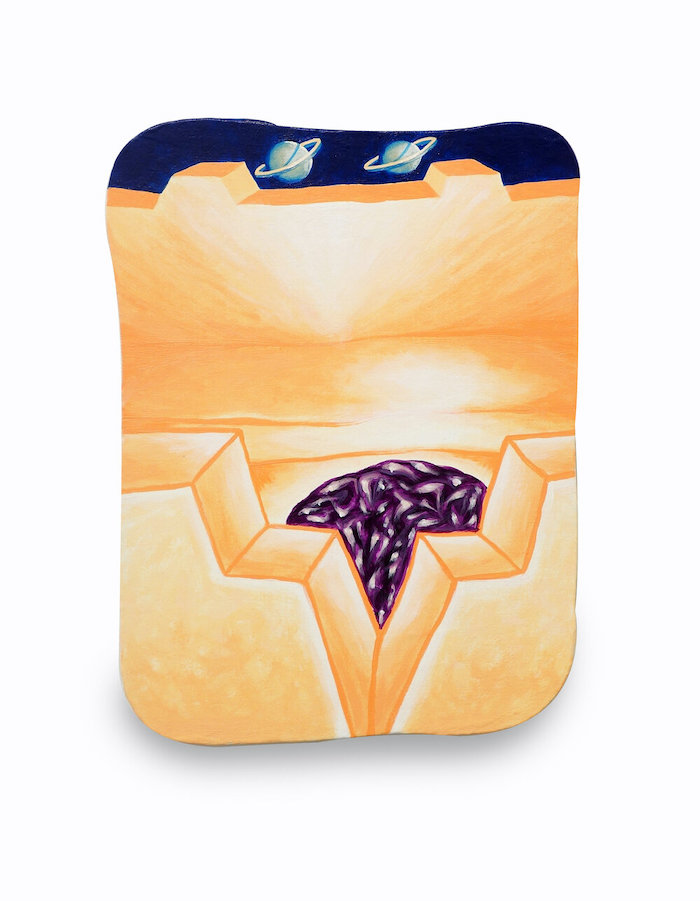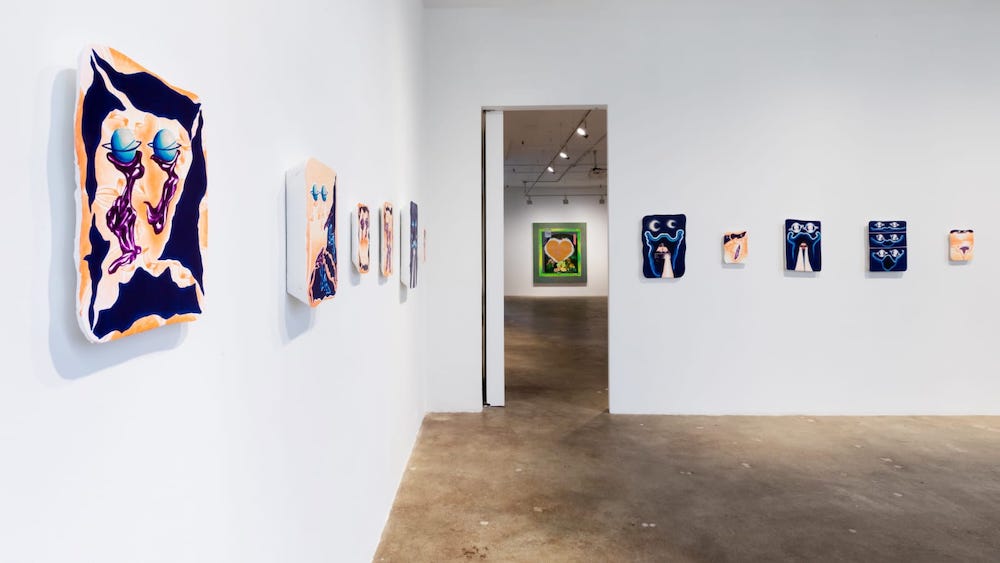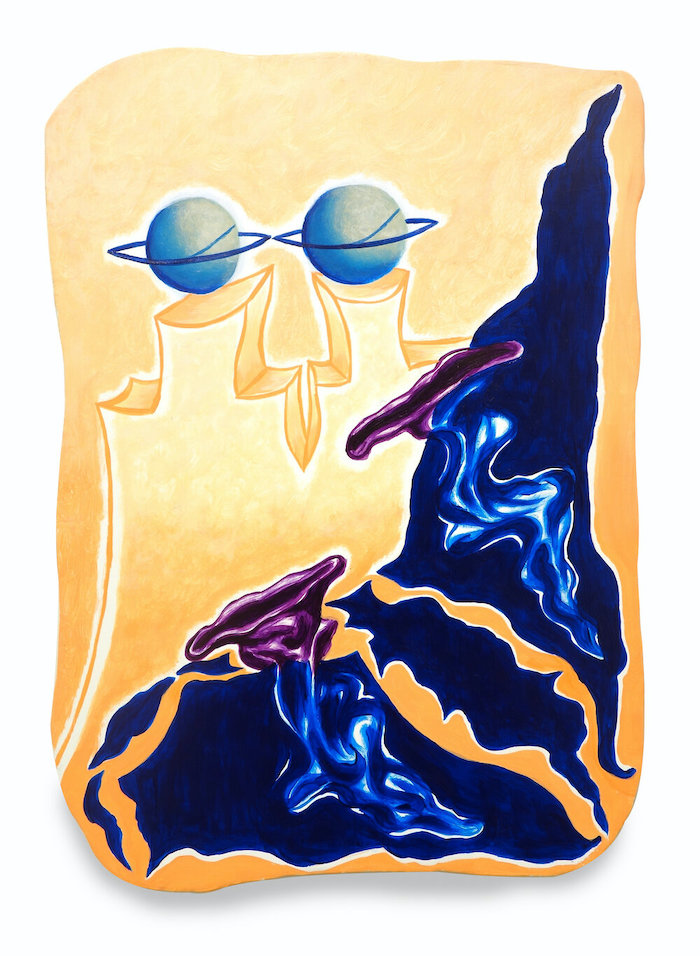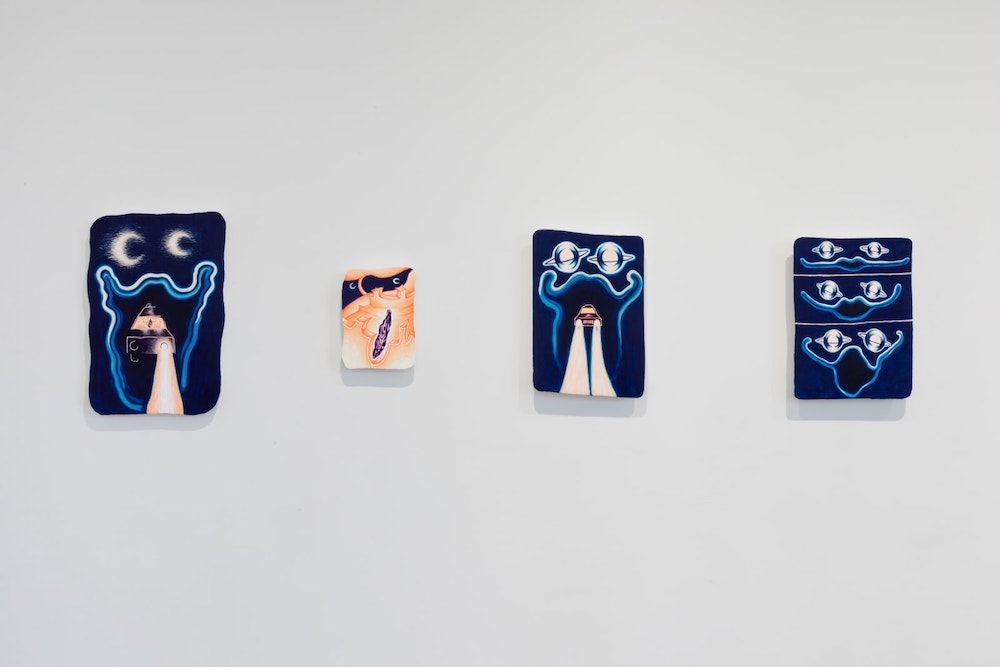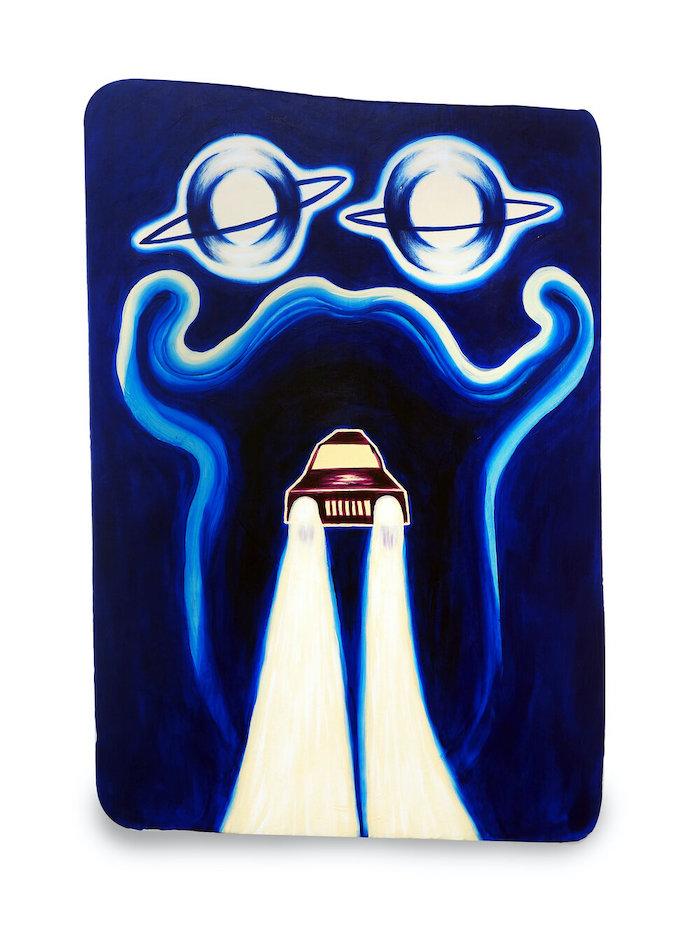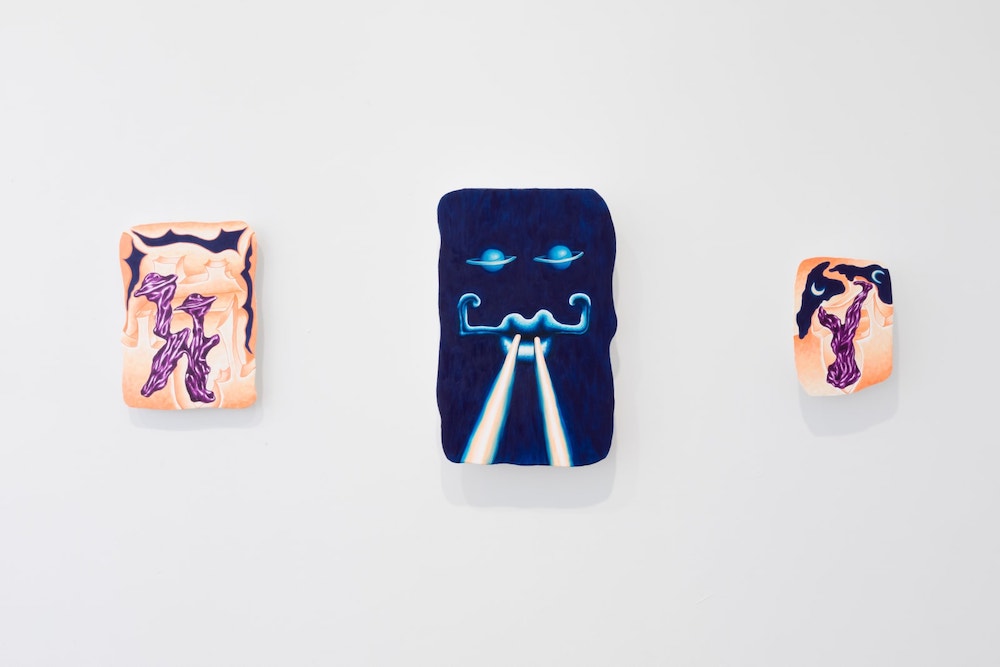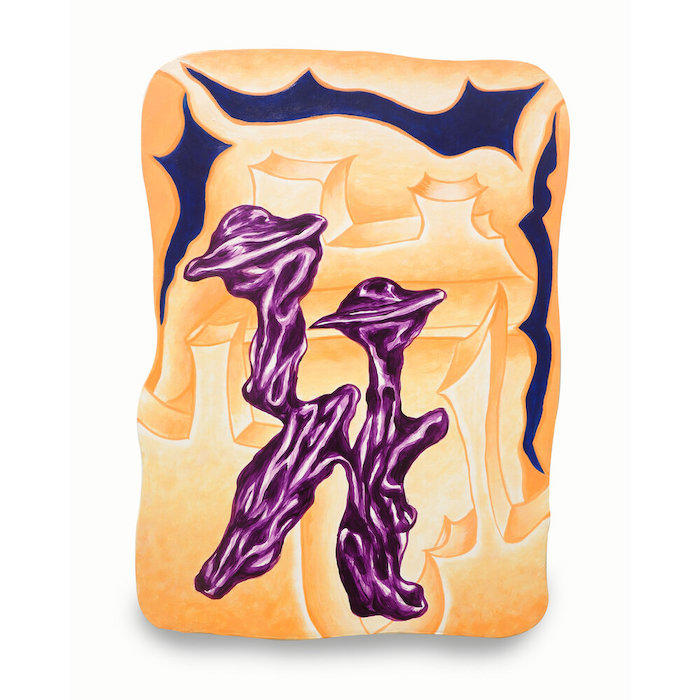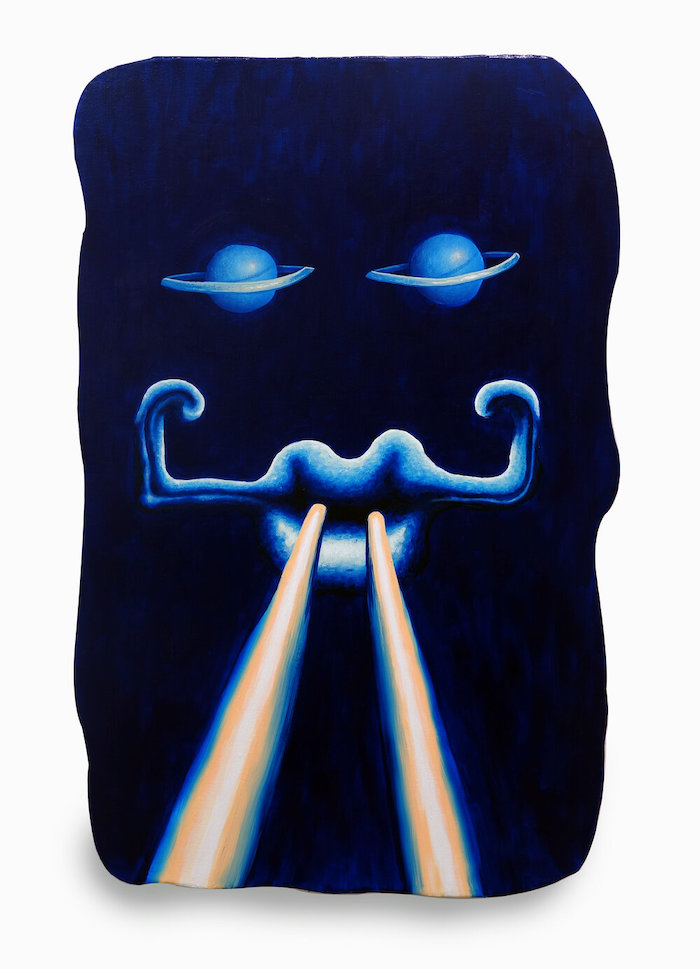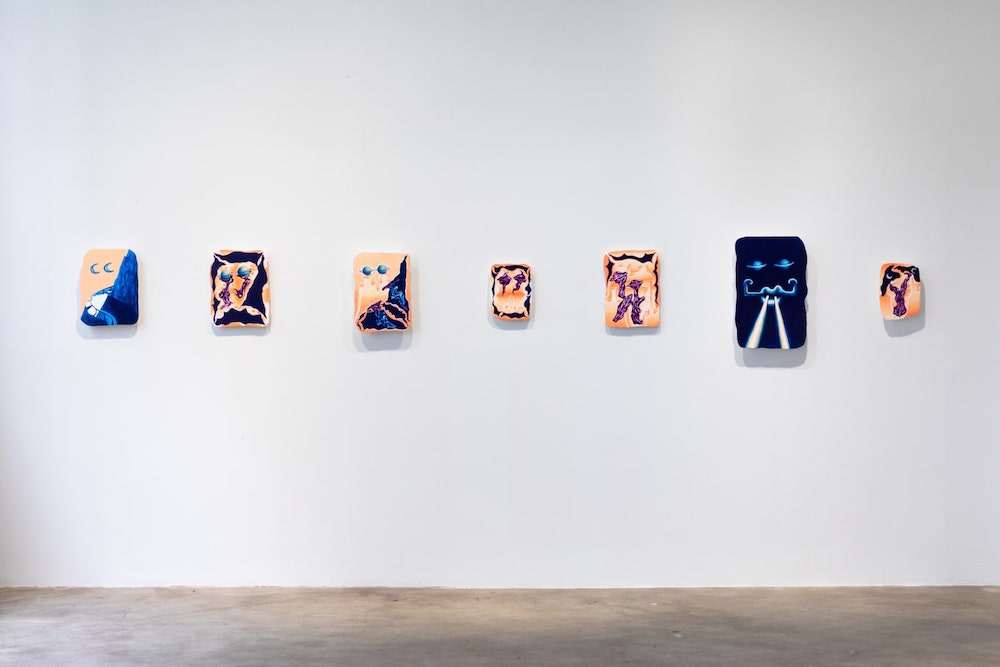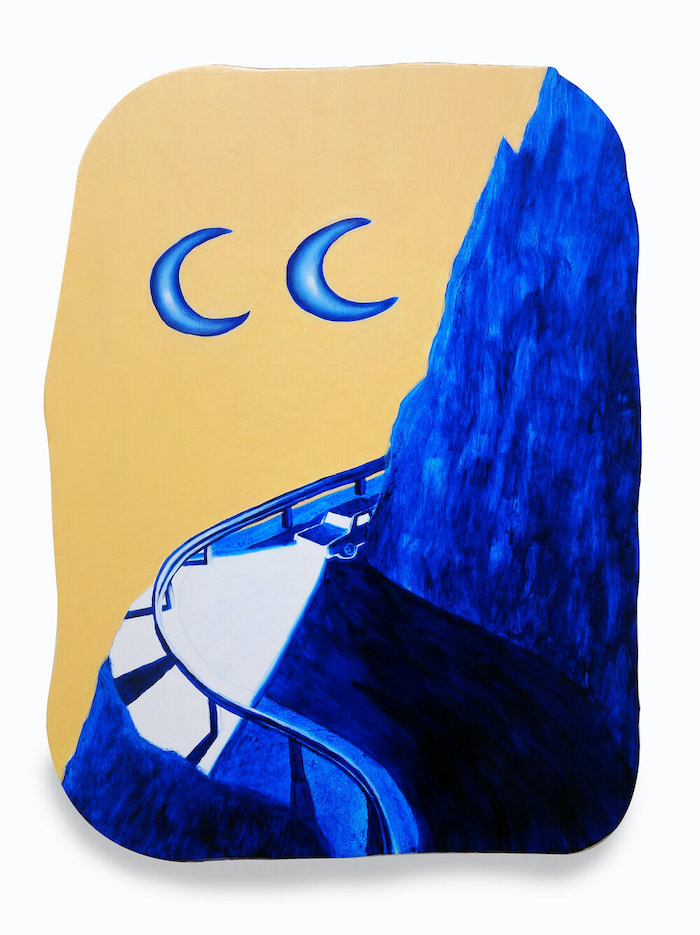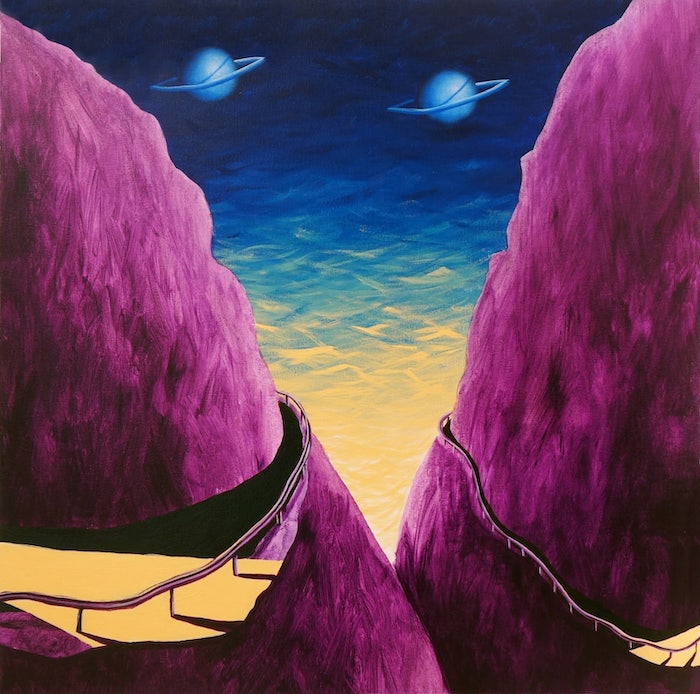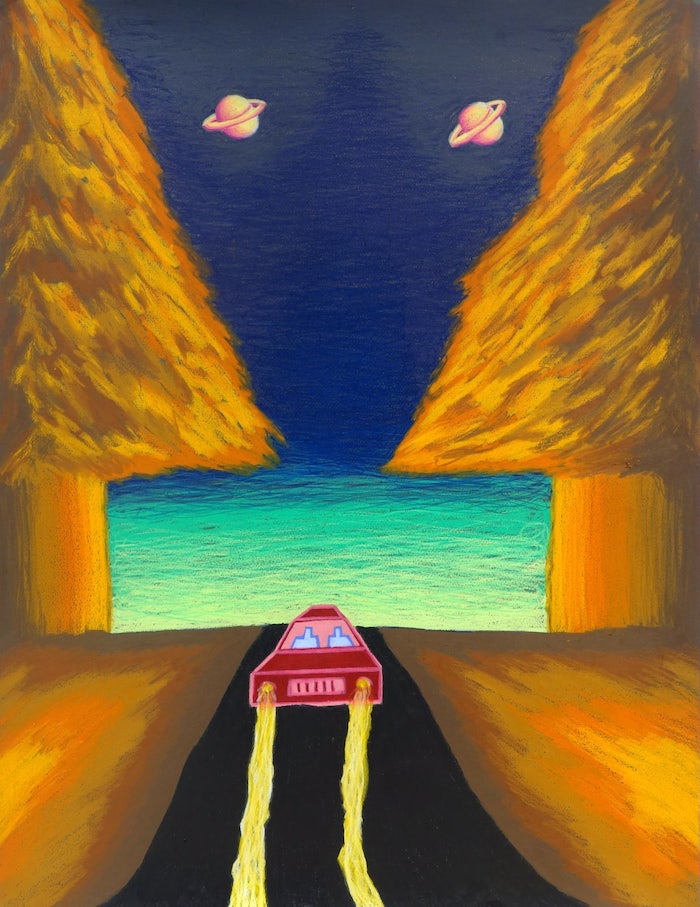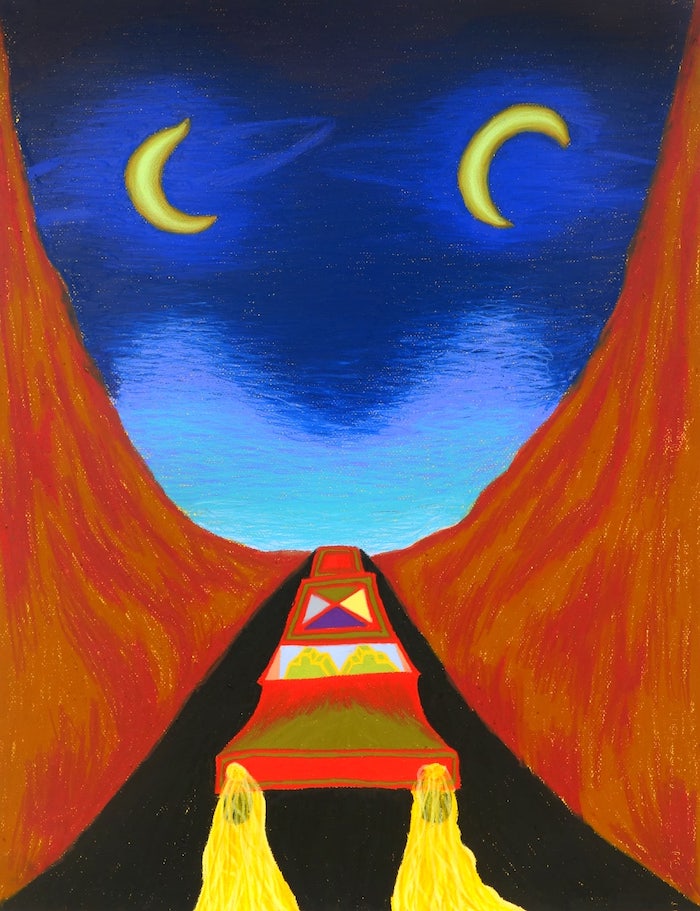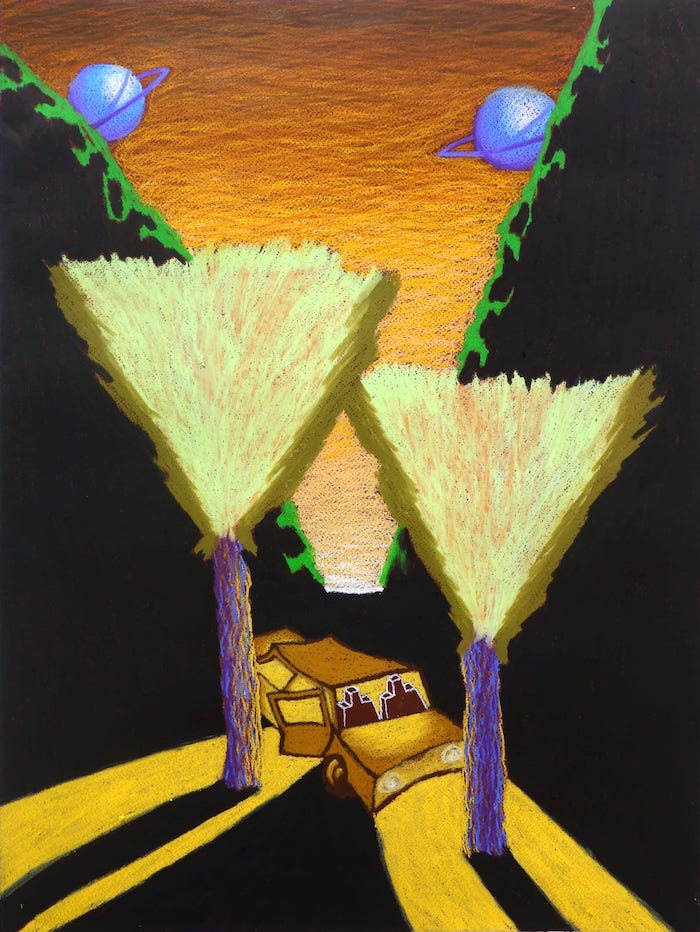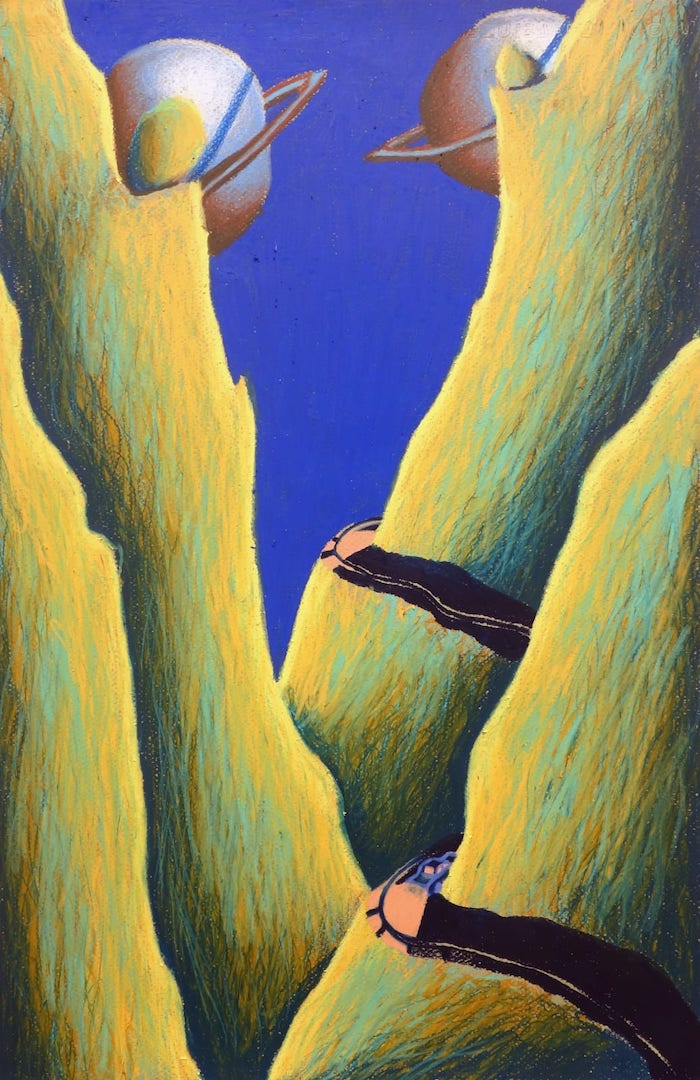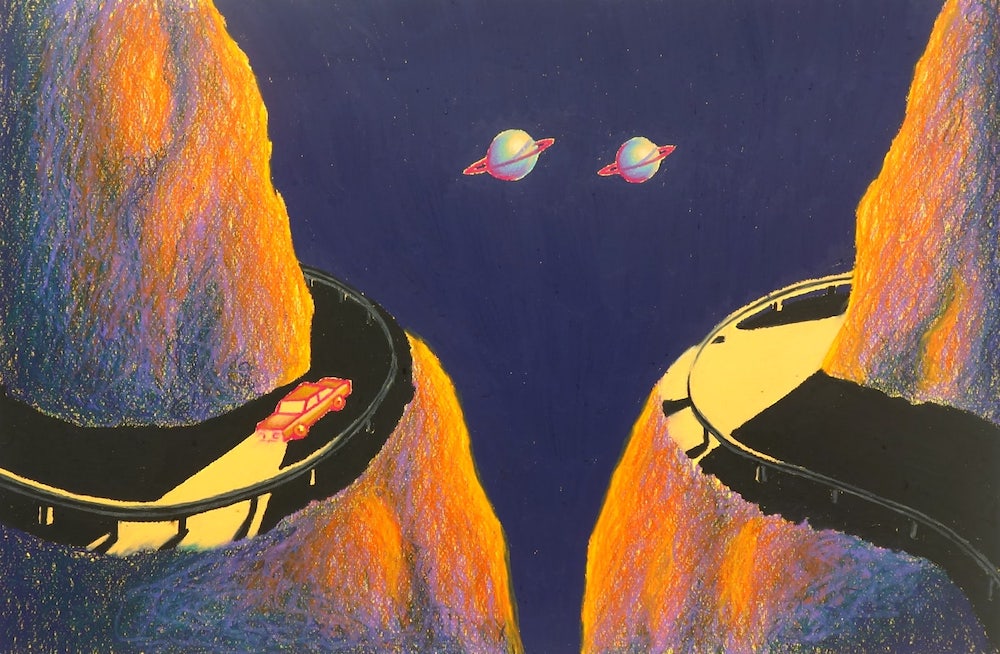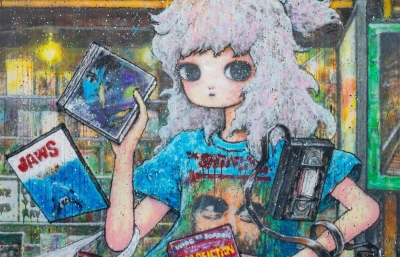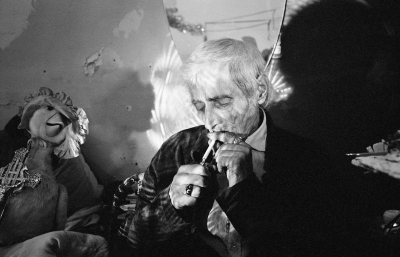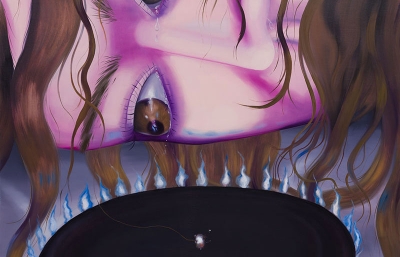"I am seduced by nowhereness while driving country roads at night. The vague location defined by where my headlights reach is all I know of my place and, as usual, there isn’t a real indication of what time is." While this could be written for a scene from The Twilight Zone or Black Mirror, it’s actually the opener from Eliot Greenwald’s new limited edition book Night Car, recently released recently on the occasion of his solo exhibition which opened on July 9th at Hesse Flatow in NYC. The book features acrylic on canvas works that comprise the show, a "mythological loop, an environment dedicated to swallowing its inhabitant, transformation, and a car... at night." In current times, steeped in worry and uncertainty, we might as well go with the flow and enjoy this rattling ride.
Building on the body of work Greenwald began working on the end of 2019, the series of paintings transforms an evening drive into a psychedelic, sci-fi tale as the car you’d normally drive to the Starbucks takes you on an undefined journey through a dark landscape where the only inhabitants might be stars and shrubs. With the vehicle as co-protagonist, the artist constructs an intense narrative driven by the light shining beaming from headlights, intersecting with surrounding landscape and astronomical denizens. 
An idea stemming from Greenwald's philosophical observation of night drives through the undiscovered byways, the car becomes a safe pod, a womb, through which the driver is "split apart and also unified with everything he is experiencing." Dominated by his distinct color palette and rendering technique, the visuals play out the drama in shadowy silhouettes and glowing light, as the main characters collide and shadow each along the way in a neverending story that evolves as the view outside "materializes continuously and vanishes simultaneously within the sphere of headlight’s gaze."
The exploration extends on Crayons on paper which further experiments with the possibilities of this anthology concept. Using a wider range of colors, slightly different settings, and amping up his technique to form even richer, brighter, and more complex glow effects, these works could be the portents of things to come for this master story maker. —Sasha Bogojev

